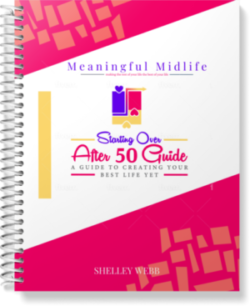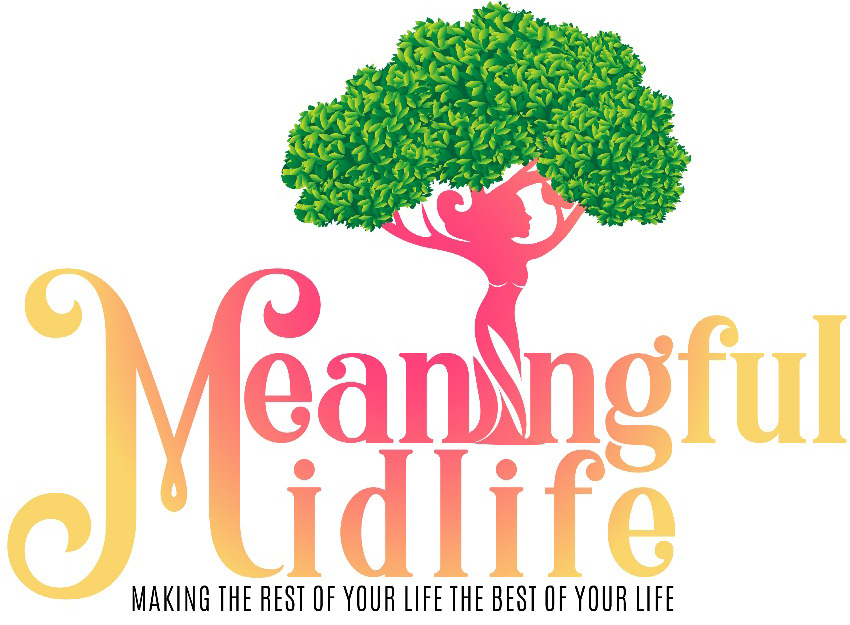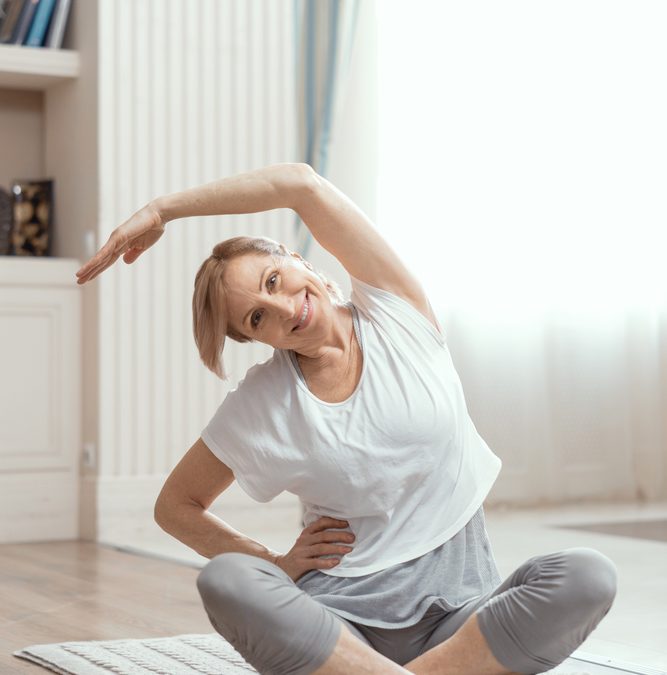This is a guest post by Dr. Charles-Davies (See his bio at the end of the article.)
During the reproductive years, the sex hormone – estrogen maintains the bone by decreasing bone resorption.
For women over 50, this age usually denotes the period after a woman has experienced menopause and with the sudden drop in estrogen, bone mass decreases.
This causes decreased bone density, brittle bones, and reduced bone strength. Women lose a small percentage of bone mass during the early years of menopause and continue to do so subsequently.
There are two main problems faced by women above 50: Osteoporosis and Osteopenia. Osteopenia refers to low bone mass density. Osteoporosis refers to a disease or condition in which osteopenic bones become brittle and suffer fractures and pain.
In this article, we’ll be explaining 7 tips to prevent these conditions in women over 50 years.
1. Know Your Status
At every point, it is important for you to know your health status. In this case, you should find out how healthy your bones are. It starts by paying a doctor a visit and discussing bone health. Some tests may be requested, and may include:
- Calcium and Vitamin D levels. A deficiency will determine the need for supplements.
- Bone resorption markers and Bone Formation markers
- Hormonal tests– estrogen levels, thyroid levels
- Antibody tests– certain autoimmune diseases like Arthritis occur in older women. It is helpful to rule out and treat such conditions as they may cause disabilities.
- DXA scan – It is an X-ray to determine the bone density. It is used mainly for the spine and hip.
- Radiological: CT, MRI, Ultrasonography and Plain X-rays
2. Diet– Do’s and Don’ts
A good diet should be the primary focus for a healthy life. It can prevent weak bones and even treat them.
Dos
- A Calcium-rich diet: 99% of Calcium is in your bones. When there is a deficiency of it, bones begin losing their cortical mass. Foods like yogurt, cheese, milk, kefir, almonds, beans, and green leafy vegetables are good Calcium sources. You can also use Calcium-fortified products like soy, rice beverages, seeds, and orange juices. Schedule your entire day to have meals that include the above foods. It will show better results rather than eating a single Calcium rich meal.
- Add the Right Vitamins: Vitamin C, D, and K have been known to aid bone health. Vitamin D levels below 30 ng/ml in the blood are bad for bones. This vitamin is chiefly responsible for calcium metabolism. When taken along with calcium, it helps. Foods like salmon, tuna, beef liver, cheese, and fortified dairy products are sources of this Vitamin. Vitamin C and K can be derived by eating a good portion of vegetables. Vitamin K prevents loss of bone minerals whereas Vitamin C exerts anti-oxidant effects and prevents damage.
- Proteins: Protein supplementation has shown to be helpful post-fracture in Orthopedic practice. A part of bone is made of proteins. Protein-rich sources include eggs, chicken, broccoli, cottage cheese, beef, quinoa, seafood, whey proteins, peanuts, and pumpkin seeds.
- Minerals: The minerals that work in synergism for bone health along with Calcium include Magnesium, Zinc, and Potassium. They play a key role in bone maintenance in children as well as older people. Magnesium consumed up to 400 mg per day is optimum. Sources include dark chocolate, Avocados, legumes, salmon, whole grains, bananas, and green leafy vegetables. Zinc is a trace element found in appropriate quantities in meat, lentils, dairy, whole grains, and eggs. For Potassium, consume bananas, oranges, apricots, dates, grapefruit, prunes, raisins, potatoes, mushroom and peas.
Don’ts
- Don’t restrict your calorie consumption to less than 1200. It leads to a large amount of bone losses.
- Caffeine reduces the absorption of Calcium. If your bone health is compromised, try green tea and an apple instead.
- Excess intake of Vitamin A rich foods (carrots and tomatoes) and supplements have detrimental effects on bones.
- Consuming iron-rich foods with Calcium-rich foods decreases Calcium absorption by the body.
- Alcohol (more than 2 glasses daily) and soft drinks are bad for older people.
- Avoid consuming too much salt.
- Avoid processed foods as they are nutritionally deprived and put extra pressure on the body for digestion.
3. Lifestyle
Some habits can make your bones better while others can wear them off.
- Maintain a healthy weight
A healthy weight is very important in achieving excellent bone health. Most of the body’s weight is supported by the bones and joints. Try to stay in the healthy BMI range.
- Eat a healthy diet
Refer to the previous point for the foods you must consume and avoid to have better bone strength.
- Stop smoking
This is very vital. Cigarette smoking leads to early menopause causing earlier exposure to reduced estrogen. It is also toxic for osteoblasts – the bone forming cells.
- Soak the sun
Taking 15-30 minutes of sun exposure daily can optimize your Vitamin D levels. Almost 1 billion people in the world suffer from its deficiency.
- Stay active
The more active you are, the more are your bones are stimulated to withstand physical pressure.
4. Exercise
Exercising will help promote bone growth and strength. It will also provide better muscular support. You don’t have to be over-enthusiastic and cause cramps. Start small. Start slow. Set a schedule which includes any of the following workouts and stick with it.
Here are examples of exercises you can try:
- Dumbbells reps
- Using Elastic resistance bands
- Using your own body weight to build strength – push-ups, planks, rising toes, and holding.
- Aerobics/ Dancing
- Jogging/ Running
- Skipping rope
- Racquet sports like badminton and tennis
- Hiking
- Walking for 20-45 minutes (brisk walk)
- Swimming
- Elliptical trainers
- Step-up workouts
- Yoga
When exercising, you can track your performance with devices like pulse oximeters. They display your heart rate and oxygen saturation.
Make sure you do some cool down exercises and stretches after these exercises. If you do not know how to go about this, approach a health professional or a qualified fitness instructor.
- Physiotherapy
In case you are bedridden or have had recent fractures, you can exercise your body passively. Physiotherapy exercises also help to prevent bone degradation.
5. Avoid Falling and Fractures
Falls and fracture are one of the most common reasons for admission of the elderly in Trauma units. Commonly seen fractures are hip, vertebrae and upper limb fractures (humerus, forearm, and wrist). These increase the morbidity and mortality of elderly women.
According to a study conducted on 78 elderly women, the prevalence of falls was 32.4%. 40% reported experiencing a fear of falling.
Ways to avoid falling include:
- Get an eye check-up. Ensure that there are no cataracts and refractive errors causing the elderly to miss elevations and depressions while walking.
- Disorders and aids: A variety of disorders prevent the proper balance of the body. These may include sciatica, joint problems, Parkinson, Alzheimer’s, Cerebellar and Vestibular problems. In such cases, you must get walking aids like canes and knee scooters or get a person to support you.
- A proper amount of physical activity can be an effective strategy to reduce falls, prevent functional decline and provide faster recovery.
- Fall – proofing your space
Make sure you have railings with your staircase, bars in your washrooms and no mess around. Check your furniture and carpet edges and place them at proper places to avoid crashing.
Make sure your place is well lit. Keep a light source beside your bed to avoid stumbling in dark. Avoid walking on slippery floors and keep all wires near the walls.
6. Supplements
If your test results show a gap from normal levels, you may be prescribed supplements.
These may include:
- Calcium
- Vitamin D
- Multivitamins
- Magnesium
- Collagen
7. Follow Up And Visit A Doctor
Orthopedic doctors can give you medical support and give suitable solutions for any bone problems. Moreover, subsequent follow-up will help you understand the results of your efforts in building strong bones.
Dr. Charles-Davies is a medical doctor who loves to share health information to help people better understand their bodies. He also loves to travel and watch soccer.
LEARN TO LOVE YOUR LIFE AGAIN
 Do you feel like you need to hit the REFRESH button on your life? Download our free guide and begin to create your best life yet!
Do you feel like you need to hit the REFRESH button on your life? Download our free guide and begin to create your best life yet!



